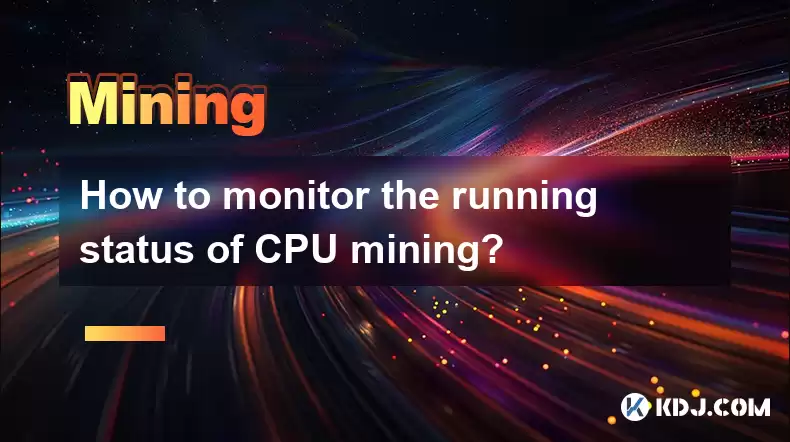-
 Bitcoin
Bitcoin $117500
2.15% -
 Ethereum
Ethereum $3911
6.19% -
 XRP
XRP $3.316
10.79% -
 Tether USDt
Tether USDt $1.000
0.01% -
 BNB
BNB $787.2
2.24% -
 Solana
Solana $175.2
4.15% -
 USDC
USDC $0.9999
0.00% -
 Dogecoin
Dogecoin $0.2225
8.40% -
 TRON
TRON $0.3383
0.28% -
 Cardano
Cardano $0.7868
6.02% -
 Stellar
Stellar $0.4382
9.34% -
 Hyperliquid
Hyperliquid $40.92
7.56% -
 Sui
Sui $3.764
7.63% -
 Chainlink
Chainlink $18.48
10.66% -
 Bitcoin Cash
Bitcoin Cash $582.1
1.88% -
 Hedera
Hedera $0.2601
6.30% -
 Avalanche
Avalanche $23.33
4.94% -
 Ethena USDe
Ethena USDe $1.001
0.02% -
 Litecoin
Litecoin $122.3
2.04% -
 UNUS SED LEO
UNUS SED LEO $8.969
-0.27% -
 Toncoin
Toncoin $3.339
0.86% -
 Shiba Inu
Shiba Inu $0.00001287
4.30% -
 Uniswap
Uniswap $10.43
7.38% -
 Polkadot
Polkadot $3.861
5.08% -
 Dai
Dai $1.000
0.02% -
 Bitget Token
Bitget Token $4.513
3.41% -
 Monero
Monero $267.7
-6.18% -
 Cronos
Cronos $0.1499
4.14% -
 Pepe
Pepe $0.00001110
5.15% -
 Aave
Aave $284.9
8.28%
How to monitor the running status of CPU mining?
Efficient CPU mining requires constant monitoring of temperature, clock speed, and power consumption via tools like HWMonitor or MSI Afterburner, alongside mining software's built-in features, to prevent overheating and maximize performance.
Mar 07, 2025 at 12:30 pm

Key Points:
- Understanding CPU mining limitations and its suitability for specific cryptocurrencies.
- Utilizing system monitoring tools for real-time CPU usage tracking during mining.
- Identifying performance bottlenecks through analysis of CPU temperature, clock speed, and power consumption.
- Implementing effective cooling strategies to maintain optimal CPU performance.
- Interpreting mining software's built-in monitoring features and utilizing external tools for comprehensive analysis.
How to Monitor the Running Status of CPU Mining?
CPU mining, while less prevalent than GPU mining due to its lower profitability, remains a viable option for certain cryptocurrencies and serves as a valuable learning tool for newcomers. Effectively monitoring its performance is crucial for maximizing efficiency and avoiding potential hardware damage. This involves understanding your system's capabilities and employing various monitoring techniques.
First, consider the limitations. CPUs are generally less efficient at mining compared to GPUs, especially for memory-intensive algorithms. The choice of cryptocurrency to mine significantly impacts performance. Algorithms like CryptoNight, which favor CPU power, are better suited for CPU mining than those optimized for GPUs. Choosing a less competitive coin can also improve profitability.
Next, real-time monitoring is paramount. Windows Task Manager provides a basic overview of CPU usage, allowing you to see the percentage of your processor being utilized by your mining software. However, for a more detailed analysis, dedicated system monitoring tools are recommended. These tools, such as HWMonitor, MSI Afterburner, or NZXT CAM, provide granular data on various hardware components, including CPU temperature, clock speed, and voltage.
High CPU temperatures are a major concern. Prolonged operation at elevated temperatures can lead to thermal throttling (reducing clock speed to prevent overheating), decreased performance, and potential hardware damage. Monitoring temperature is crucial for identifying overheating issues. Most mining software includes temperature monitoring features, alerting you to potentially dangerous levels.
Power consumption is another critical factor. CPU mining can significantly increase your electricity bill. Monitoring power usage through your power supply's monitoring capabilities or dedicated power meters helps track the energy cost of your mining operation. This allows you to optimize settings or consider more energy-efficient options.
Analyzing clock speed helps determine if your CPU is performing optimally. If the clock speed drops unexpectedly, it might indicate thermal throttling or other performance bottlenecks. Analyzing this alongside temperature data can help pinpoint the cause. High voltage can also contribute to increased heat and power consumption, so keeping an eye on it is essential.
Many mining software packages include built-in monitoring features, displaying key metrics like hash rate, temperature, and fan speed. However, these are often limited in scope. Supplementing them with dedicated system monitoring tools offers a more comprehensive picture of your CPU's performance during mining. This combination allows for more precise adjustments to optimize your mining operation.
Effective cooling is vital. Ensure adequate airflow around your CPU using a case fan or a CPU cooler. Regular cleaning of dust buildup within your computer case improves cooling efficiency. Consider upgrading to a higher-performance CPU cooler if temperatures remain consistently high. These preventative measures significantly enhance the lifespan and performance of your hardware.
Beyond software-based monitoring, physical observation is also valuable. Listen for unusual noises emanating from your computer; excessive fan noise often indicates high temperatures or a failing component. Regularly inspect your hardware for any signs of physical damage or excessive dust accumulation. Proactive maintenance is crucial for preventing issues and ensuring longevity.
Frequently Asked Questions:
Q: What is the best software for monitoring CPU mining?
A: There's no single "best" software, as the optimal choice depends on your specific needs and preferences. However, popular options include HWMonitor (for detailed hardware monitoring), MSI Afterburner (known for its GPU monitoring but also offering CPU data), and NZXT CAM (a comprehensive system monitoring suite). Your mining software itself might also provide sufficient monitoring capabilities.
Q: My CPU is overheating while mining. What should I do?
A: Overheating is a serious issue. First, check your cooling solution – ensure your CPU cooler is properly installed and functioning correctly. Clean out dust from your computer case. If temperatures remain high, consider upgrading to a better CPU cooler or reducing your mining intensity. Prolonged high temperatures can damage your CPU.
Q: How can I improve the performance of my CPU mining?
A: Performance improvements depend on several factors. Choosing a cryptocurrency algorithm well-suited for CPUs is crucial. Ensure your CPU is running at its optimal clock speed (avoiding thermal throttling). Proper cooling is essential to prevent performance loss due to overheating. Overclocking (carefully and with understanding) might offer a performance boost, but it carries risks and increased heat generation.
Q: Is CPU mining profitable?
A: The profitability of CPU mining is highly variable and depends on factors like electricity costs, the cryptocurrency's price, mining difficulty, and your CPU's hashing power. Generally, CPU mining is less profitable than GPU mining for most popular cryptocurrencies. However, it can be profitable for less competitive coins or as a learning experience.
Q: What are the risks associated with CPU mining?
A: The primary risks include hardware damage from overheating, high electricity costs, and the volatility of cryptocurrency prices. Improper cooling can lead to reduced lifespan and potential failure of your CPU. Always monitor your hardware closely and take preventative measures to mitigate these risks.
Disclaimer:info@kdj.com
The information provided is not trading advice. kdj.com does not assume any responsibility for any investments made based on the information provided in this article. Cryptocurrencies are highly volatile and it is highly recommended that you invest with caution after thorough research!
If you believe that the content used on this website infringes your copyright, please contact us immediately (info@kdj.com) and we will delete it promptly.
- SNEK, Cardano, and the Contributor's Conundrum: A Meme Coin's Fight for Recognition
- 2025-08-08 16:30:12
- Toshi Crypto's Wild Ride: Rally, Demand Slump, and What's Next
- 2025-08-08 16:30:12
- Ethereum, Staking Yields, and DeFi Exposure: A New Era for Investors?
- 2025-08-08 15:10:12
- Unilabs Pumps MIA, Binance Coin Bouncing Back, and Ethereum's Bearish Blues
- 2025-08-08 15:10:12
- Ethereum's Wyckoff Markup and Market Rotation: A New Era?
- 2025-08-08 15:30:12
- Ethereum, Vitalik Buterin, and the Overleveraged Game: A Balancing Act
- 2025-08-08 15:30:12
Related knowledge

What is "proof-of-work" and how does it relate to mining?
Aug 07,2025 at 02:03pm
Understanding the Concept of Proof-of-WorkProof-of-work (PoW) is a consensus mechanism used in blockchain networks to validate transactions and secure...

What are the differences between mining on Windows vs. Linux?
Aug 06,2025 at 11:29pm
Overview of Cryptocurrency Mining PlatformsCryptocurrency mining involves using computational power to solve complex cryptographic puzzles and validat...

How to use an old computer for cryptocurrency mining?
Aug 07,2025 at 12:42pm
Understanding the Feasibility of Using an Old Computer for MiningUsing an old computer for cryptocurrency mining may seem outdated, but it is still te...

Can you mine cryptocurrency using solar power?
Aug 07,2025 at 12:00am
Understanding the Basics of Cryptocurrency MiningCryptocurrency mining involves validating transactions on a blockchain network by solving complex cry...

How to build a mining rig inside a PC case?
Aug 06,2025 at 11:01pm
Understanding the Basics of a Mining Rig in a PC CaseBuilding a mining rig inside a PC case involves transforming a standard computer chassis into a d...

What are the best cryptocurrencies to mine with an ASIC?
Aug 08,2025 at 01:22am
Understanding ASIC Mining and Its Role in CryptocurrencyASIC stands for Application-Specific Integrated Circuit, a specialized hardware designed to pe...

What is "proof-of-work" and how does it relate to mining?
Aug 07,2025 at 02:03pm
Understanding the Concept of Proof-of-WorkProof-of-work (PoW) is a consensus mechanism used in blockchain networks to validate transactions and secure...

What are the differences between mining on Windows vs. Linux?
Aug 06,2025 at 11:29pm
Overview of Cryptocurrency Mining PlatformsCryptocurrency mining involves using computational power to solve complex cryptographic puzzles and validat...

How to use an old computer for cryptocurrency mining?
Aug 07,2025 at 12:42pm
Understanding the Feasibility of Using an Old Computer for MiningUsing an old computer for cryptocurrency mining may seem outdated, but it is still te...

Can you mine cryptocurrency using solar power?
Aug 07,2025 at 12:00am
Understanding the Basics of Cryptocurrency MiningCryptocurrency mining involves validating transactions on a blockchain network by solving complex cry...

How to build a mining rig inside a PC case?
Aug 06,2025 at 11:01pm
Understanding the Basics of a Mining Rig in a PC CaseBuilding a mining rig inside a PC case involves transforming a standard computer chassis into a d...

What are the best cryptocurrencies to mine with an ASIC?
Aug 08,2025 at 01:22am
Understanding ASIC Mining and Its Role in CryptocurrencyASIC stands for Application-Specific Integrated Circuit, a specialized hardware designed to pe...
See all articles

























































































